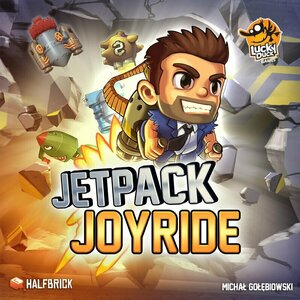
Plays Four: And We'll Never be Parted; The Son, Visits; Meanwhile the Lights Go Down and Everything Becomes Black
Ann Henning Jocelyn, Jon Fosse, Louis A. Muinzer and May-Brit Akerholt
Book
"Includes the plays And We'll Never be Parted, The Son, Visits and Meanwhile the lights go down and...

Christopher Marlowe: Four Plays: Tamburlaine, Parts One and Two, the Jew of Malta, Edward II and Dr Faustus
Christopher Marlowe and Brian Gibbons
Book
This New Mermaids anthology brings together the four most popular and widely studied of Christopher...

Doctor Faustus and Other Plays: Tamburlaine: Parts I and II: Doctor Faustus, A- and B-Texts; The Jew of Malta; Edward II
Christopher Marlowe, David Bevington and Eric Rasmussen
Book
Christopher Marlowe (1564-1593), a man of extreme passions and a playwright of immense talent, is...
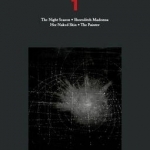
Rebecca Lenkiewicz: Plays 1: The Night Season; Shoreditch Madonna; Her Naked Skin; the Painter
Book
"The Night Season is unusual; no politics, no issues, no history - just a bold attempt to grapple...
Purple Phoenix Games (2266 KP) rated Jetpack Joyride in Tabletop Games
Jan 8, 2020 (Updated Jan 8, 2020)
Originally a mobile game, Jetpack Joyride follows our main character, Barry, as he attempts to escape a top-secret lab with a stolen jetpack! He must avoid being hit by zappers, annihilated by lasers, and blown away by missiles in the process. If Barry succeeds, he escapes with not only the high-tech jetpack, but also with as many gold coins and other top-secret gadgets as he can get his hands on! So the risk is definitely worth the reward. But if Barry is unable to escape, he will face the consequences for his unauthorized joyride… In all honesty, I had never heard of Jetpack Joyride before I Kickstarted the board game version, so I downloaded it on my phone to see how it plays. Do you remember Flappy Bird? The mobile version of Jetpack Joyride is kiiiinda like that, but more exciting and way less infuriating. It’s free to download in the App Store and Google Play Store, so check it out if you’re interested! Anyway, back to the board game version. The premise is the same as the app – you have to create a path for Barry to use for his escape from the lab, utilizing the gadgets available to you and collecting gold coins on your way.
DISCLAIMER: We are using the Kickstarter Deluxe version of the game. We do have the expansions from the KS campaign, but will not be using those for this review. Also, we do not intend to cover every single rule included in the rule book, but will describe the overall game flow and major rule set so that our readers may get a sense of how the game plays. For more in depth rules, you may purchase a copy from the publisher directly or from your FLGS. -T
Jetpack Joyride is a real-time game of tile placement in which players are racing to see who can complete their run (path through the lab) the fastest. The game lasts for 3 runs, and points are earned throughout all runs. To setup, each player receives a set of 4 lab sector cards and sets them on the table in front of them in numerical order, 1-4. Three mission cards (cards that score points at the end of the run) are revealed and available for all players. Players may also have gadgets, available only to them, to help score extra points. When a run begins, all players grab translucent polyominoes (like matte versions of bits from Blokus) from the common pool and place them on their lab cards to create an unbroken path through the lab. There are specific placement restrictions that I will leave for you to discover in the rulebook. The game has no set time limit for each run, but it is a race to complete a path before your opponents. At the end of the run, points are tallied for completed missions and gadget cards. Easy, right? Here’s a small twist – before starting the next run, all players pick up their lab cards and pass them to the player on their left. So each run, players are looking at new cards and must find new paths through the lab! New mission cards and gadgets are revealed before subsequent runs as well. The player with the most points at the end of all 3 runs is the winner!
Jetpack Joyride is a fast-paced, exciting, and surprisingly strategic game that keeps all players engaged and entertained. And that’s what I love about it. First of all, real-time games are always high-energy, at least in my opinion. It’s nearly impossible to stay calm and collected when you’re literally racing against your opponents! Jetpack Joyride is definitely not a passive game, and there’s so much action and excitement that you sometimes forget you’re literally just laying tiles on cards. The next thing I love about this game is how deceptively strategic it is. Laying tiles to form a legal path across cards is not complicated, but doing so while also trying to earn extra points by completing missions (like placing 3 tiles of the same shape in a row, for example) adds a strategic element that you don’t expect. You’re not only trying to finish your run the fastest, but you’ve also got to fulfill the requirements for multiple mission and gadget cards too. One misplaced tile could decimate a run for you, so you’ve always got to be thinking several tiles in advance.
Going along with that, another neat thing about Jetpack Joyride is that all players are drawing tiles from a common pool. There is a finite number of tiles, and a specific number of the different shapes, so if the shape of tile you need is gone from the pool, you’re outta luck! You have to think and move quickly, otherwise you might get knocked out of a run, and that costs you valuable end-game points. For such a simple game, Jetpack Joyride also has a lot of variability. All lab cards are double-sided, and can be mixed and matched in any combination, as long as they are in a numerical set of 1-4. There are so many possibilities, chances are you won’t ever play with the same card combo twice….and if you do, chances are you won’t remember it 😛 All of these aspects elevate this game from a simple party game to a strategically fun game that can be played with any player count.
Overall, I think Jetpack Joyride is great. After my first play, I rated it a 4+, but after a few more I’ve changed my rating to a 5. As you can see from our scores above, Travis and our guest judge Luke enjoyed it as well. It’s a nice, light game that can be used as a filler between heavier games, or as a main-event game all on its own. Definitely a game I will use with newer gamers, and the strategic side will keep me coming back for more. I think Jetpack Joyride will get a lot of playtime from me, and it was worth my investment on Kickstarter. Purple Phoenix Games gives it a jet-powered 15 / 18.
Purple Phoenix Games (2266 KP) rated The Lost Expedition in Tabletop Games
Jul 22, 2021
Disclaimer: The Lost Expedition can be played cooperatively, solo, or head-to-head. This review only covers the cooperative version of the game! -L
The Lost Expedition is a cooperative (in this case) game of strategy and hand management in which players are trying to traverse the jungle to reach El Dorado by carefully managing their Resources and utilizing their collective Expertise. To setup the game, choose 3 explorers to form your team, and collect 3 Ammunition and 4 Food from the supply tokens. Shuffle the adventure cards, dealing 4 to every player, placing the remainder in a face-down draw deck. Depending on the difficulty selected, place the corresponding number of Expedition cards in a row on the table (we played Normal mode, using 9 Expedition cards). Place 4 Health tokens on each explorer card, place the phase token with the Morning side up, select a starting expedition leader, and the game is ready to begin.
Each round consists of 2 phases: Morning and Evening. During the Morning phase, players will take turns playing adventure cards from their hand, one at a time, until each player has played 2 cards. This line of cards forms the path that the explorers are traveling in the morning. After all cards have been played, they will be rearranged in numerical order, from lowest to highest. Once the cards are organized, they will be resolved one at a time, from lowest to highest, until all cards have been addressed. Examples of card actions are: discarding the next card in play, swapping two cards on the path, adding a new card to the end of the path, or moving the team pawn one card closer to El Dorado. Adventure cards have different colored boxes that indicate action choices that the players must make. Some actions are mandatory and must be completed. Some cards offer 2 or more choices, one of which must be selected and performed to clear the card. And some cards have optional choices, that do not have to be completed for the card to be resolved. Certain actions will require the team to gain/spend Resources tokens or Expertise from your explorers (in the form of Health tokens). At the end of the Morning phase, the team loses 1 Food token, and play continues to the Evening phase.
During the Evening phase, the gameplay is like that of the Morning with a couple of changes. Players again will alternate playing cards, but will play until all remaining cards in their hand have been played. Cards in the Evening phase are resolved in the order that they are played, and are not organized numerically like in the Morning phase. Again, after all cards are played, they will be resolved one by one as normal, paying Resources/Expertise as required. Once the Evening phase is finished, the team loses 1 Food token, players draw a new hand of cards, select another expedition leader, and a new round begins with the Morning phase. Play continues in this fashion until either the players have reached El Dorado, all 3 of the team’s explorers have died (have no remaining Health tokens), or if the adventure card draw deck runs out 2 times during play.
Pretty straight-forward, right? Play cards, resolve cards, repeat. That is one thing I really like about The Lost Expedition – it is simple, yet so strategic. Ultimately this is a game of Resource/Expertise management. You need at least 1 explorer to make it to El Dorado alive. There is no reward without risk in this game. Couple that with the multiple action options on each card, and you’ve really got to have a strategy. Maybe you’re low on Ammunition, but in order to gain back some much-needed Health, you’ve got to spend Ammo. Or are you willing to deal damage to an explorer if it means the team can advance a card? There are so many things to consider, and so many ways in which you can strategize, and that keeps all players engaged.
That being said, players are not allowed to reveal the details of any cards in hand. So how can you best communicate with your team about what types of cards to play if you can’t tell them point-blank? That added aspect of working in a team creates some unique strategies in and of itself. Ultimately, the final decision comes down to the expedition leader for the round – but what if they choose the action you didn’t want? How can everyone help balance everyone else out? You really have to work together to be successful. The flip-side of that teamwork is that the game can be frustrating in some aspects. You never truly know what your teammates are going to play at any given time, and the card they choose could totally unravel your plan. Not being able to discuss the specifics of cards in your hand makes sense (because then why wouldn’t the team just have one collective hand of cards?), but it adds an element of randomness and luck to the game that seems counterintuitive to me. Playing the wrong card at the wrong time might just turn your team against you, and that undermines the spirit of the game.
Let’s touch briefly on components. The cards are nice, oversized, and sturdy. The artwork is colorful and thematically appropriate. All of the Resources tokens are thick cardboard, and the meeples are nice and chunky. All in all, good production quality overall.
So how do I really feel about The Lost Expedition? I think it’s ok. It is strategic and entertaining, with the added elements of teamwork and cooperation – you either win together or lose together. As a group, you’ve got to have an adaptable strategy and manage your resources as best you can. Is it a game that I love? No. But it’s one that will probably stay in my collection for a bit, before it moves on to someone who might see some hidden quality that I may have missed. If you want a nice and relatively simple team game to play, maybe check out The Lost Expedition. And if risk/reward or resource management isn’t your jam, then maybe keep looking beyond this one. Purple Phoenix Games give The Lost Expedition an eventful 6 / 12.
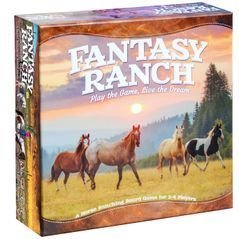
Fantasy Ranch
Tabletop Game
Welcome to Fantasy Ranch! Kick off your boots and pull up a chair for a game where all your dreams...
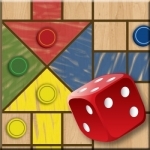
Classic Ludo Offline & Online
Games
App
NEW: Multiplayer Online with Facebook Friends available now. Calling all the kings of Ludo game,...
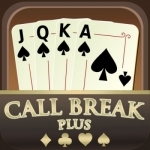
Call Break Plus
Games
App
Call Break is a strategic trick-based card game played by four players with a standard deck of 52...
